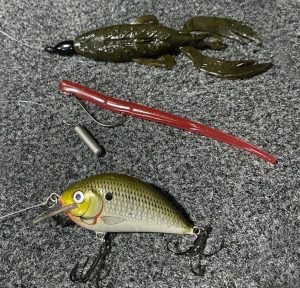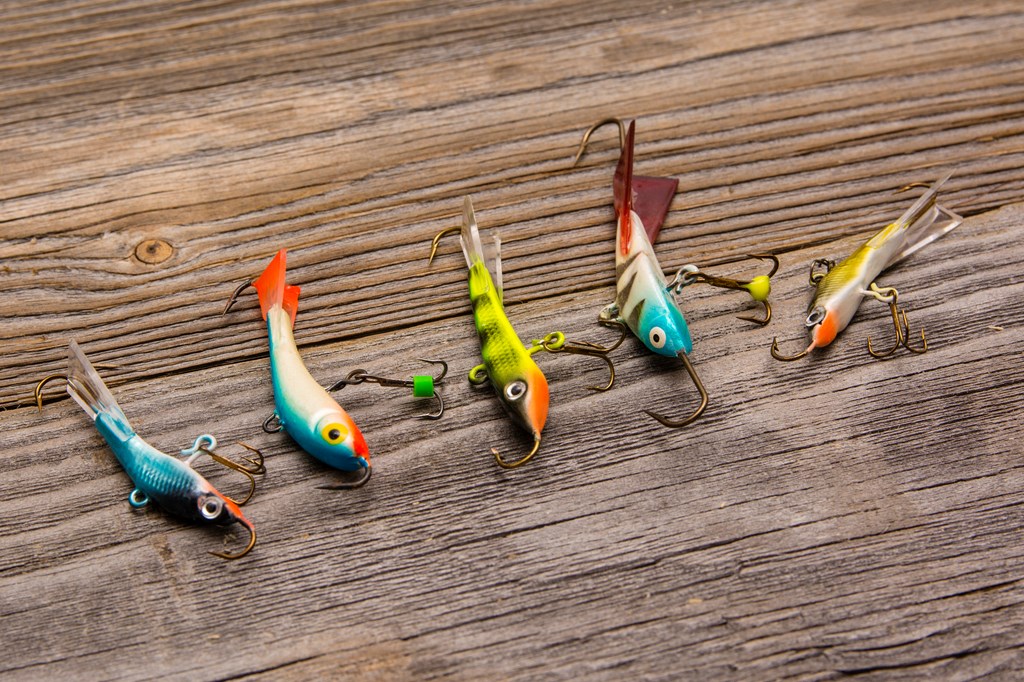15 Bass Lure Options Every Angler Should Keep in Their Tackle Box
Discover the Best Techniques for Choosing Bass Lures for Your Next Fishing Expedition
Selecting the right bass Lures can considerably affect fishing success. Fishermens need to take into consideration various elements, such as seasonal patterns and water quality. Understanding bass behavior is essential (Bass Fishing Lures). Picking Lures that imitate all-natural victim can result in better results. Numerous are unsure concerning the ideal methods to apply. What methods should one focus on to improve their angling experience? The responses depend on checking out particular problems and adjusting as necessary
Recognizing Bass Actions and Habitat
Recognizing the nuances of bass actions and environment is important for any kind of angler aiming to enhance their fishing success. Bass are commonly located in different settings, consisting of lakes, rivers, and reservoirs, where they seek framework such as immersed rocks, vegetation, and fallen trees. Their behavior is greatly influenced by water temperature level, light degrees, and readily available forage.
During warmer months, bass often tend to be extra active, usually living in shallower waters, while in colder months, they pull back to deeper locations. Additionally, bass display patterns of feeding, commonly being much more hostile throughout dawn and sunset. They are opportunistic predators, taking advantage of smaller fish, insects, and crustaceans. Comprehending these factors can help fishermens identify prime fishing places, in addition to the very best times to fish. Identifying bass behavior in connection with their habitat is critical for effective angling, guiding fishermens in making educated decisions about where to cast their lines.
Matching Lures to Seasonal Issues
As fishermens adjust their methods to transforming periods, matching Lures to seasonal conditions becomes an important method for improving fishing success. In springtime, when bass are emerging from winter season dormancy, fishermens often utilize spinnerbaits and shallow-running crankbaits to simulate the motions of prey. Summertime demands a change to topwater Lures or soft plastic worms, as bass seek color and cooler waters. During the loss, when bass are fattening up before winter season, bigger Lures that mimic baitfish can be reliable. Winter season calls for an extra subtle method; jigs and slow-moving finesse lures typically generate better outcomes as bass become sluggish. Comprehending these seasonal patterns aids anglers select the best attractions, thereby boosting their possibilities of a successful catch. By straightening appeal options with the all-natural behavior of bass throughout the year, anglers can maximize their angling experience and boost their total success on the water.
The Value of Shade Choice
Color option plays a vital function in bass fishing, as it can dramatically influence a fisher's success. Aspects such as water clarity, seasonal changes, and the certain preferences of various bass species all influence which shades are most effective. Comprehending these elements allows fishermens to make informed options that boost their angling experience.
Water Clarity Factors To Consider
When the water clarity differs, picking the appropriate bass appeal color ends up being critical for drawing in fish. In clear water, all-natural shades such as shad or bluegill patterns often tend to be more efficient, as they resemble the prey bass are accustomed to seeing. Alternatively, in murky or tarnished water, brighter shades like chartreuse or fire tiger can enhance exposure, making it easier for bass to find the appeal. The comparison between the appeal and the surrounding atmosphere plays a considerable role in angling success. Anglers should likewise take into consideration the moment of day; lighter shades might work much better in bright sunshine, while darker shades can be extra reliable throughout low-light problems. Adjusting attraction shade to water clearness enhances the chances of a successful catch.
Seasonal Color Patterns
How do seasonal changes impact bass actions and attraction efficiency? As temperature levels change throughout the year, bass readjust their feeding routines and liked environments, making shade selection essential for successful angling. In springtime, when bass spawn, bright shades like chartreuse can stand out. Summer season often ask for even more all-natural tones, such as environment-friendly pumpkin or shad patterns, as bass seek to blend in with their environments. During fall, lively shades like orange and red resemble the altering foliage, tempting bass as they prepare for winter season. In wintertime, subdued tones such as white or gray may be much more effective, as bass come to be sluggish. Inevitably, comprehending seasonal shade patterns allows fishermens to select Lures that resonate with bass's current habits, enhancing their possibilities of success.

Species-Specific Preferences
Recognizing species-specific choices is important for anglers wanting to enhance their attraction choice. Different bass species, such as largemouth and smallmouth, exhibit distinct shade choices based upon their environment and feeding actions. Largemouth bass commonly favor darker shades, especially in murky waters, where shades like dark and black environment-friendly mimic all-natural victim. In contrast, smallmouth bass are more probable to react to brighter colors, such as chartreuse and orange, particularly in clear waters. Additionally, water clearness and light conditions can influence these choices, making it vital for fishermens to adjust their attraction shade accordingly. By thinking about these species-specific preferences, fishermens can boost their opportunities of an effective fishing trip, ultimately enhancing their total experience on the water.
Choosing the Right Lure Type for Various Situations
Choosing the ideal attraction kind for various fishing situations is important for success on the water. Fishermens have to take into consideration aspects such as water clearness, climate condition, and the bass's feeding practices. For dirty water, darker-colored attractions, such as spinnerbaits or jigs, can be efficient, as they create a solid shape. In clear water, natural-colored Lures like soft plastics or topwater baits may entice careful bass.
When angling in heavy cover, utilizing heavy jigs or weedless rigs can assist navigate through obstacles without getting. Alternatively, open water situations might take advantage of crankbaits or swimbaits that can cover higher ranges. Additionally, throughout cooler months, slower-moving Lures have a tendency to be extra effective, while warmer you can try here conditions may ask for faster retrieves. By adapting lure options to particular atmospheres, anglers enhance their possibilities of an effective catch.
Explore Dimension and Activity

Anglers commonly explore an array of sizes and activities to figure out what jobs best under differing conditions. A slow-moving, subtle activity may be perfect in chillier water, while a quick, hostile retrieve might be extra reliable in warmer temperatures. By meticulously observing the bass's reactions to these variations, anglers can improve their approach and enhance their chances of a successful catch. Ultimately, the right mix of size and action can make a considerable difference on the water.
Reading Water Conditions for Better Lure Selections
Recognizing water problems is vital for selecting the best bass attraction. Variables such as water clarity and temperature level can dramatically affect fish actions and feeding patterns. By analyzing these conditions, fishermens can make enlightened decisions that enhance their opportunities of a successful catch.
Analyzing Water Clarity
Exactly how does water clarity affect the performance of bass lures? Water clearness dramatically impacts bass actions and the visibility of appeals. In clear water, bass tend to be much more careful, making natural-colored Lures extra efficient as they resemble victim closely. Anglers might select lighter, subtler hues to avoid alarming fish. Conversely, in murky or stained water, more vibrant and even more dynamic shades stand out, drawing in attention also in reduced presence conditions. Furthermore, the kind of appeal can differ; slower-moving Lures may work better in clear water, while faster, more hostile presentations can lure bass in murkier environments. Comprehending the quality of the water allows anglers to pick Lures that optimize their chances of success during their fishing expedition.
Understanding Water Temperature
As water temperature rises and fall, it directly affects bass behavior and their feeding patterns, making it essential for fishermens to think about when selecting attractions. Typically, bass choose warmer temperature levels, typically in between 65 ° F and 75 ° F, where their metabolic process is enhanced, causing enhanced feeding activity. In cooler water, bass become lethargic and might like slower-moving lures, such as jigs or soft plastics. Alternatively, throughout warmer months, faster presentations like crankbaits or topwater YOURURL.com Lures can be much more effective. Fishermens ought to likewise consider seasonal modifications; for instance, springtime warming results in aggressive feeding as bass prepare to generate. By understanding how temperature level impacts bass, fishermens can make educated decisions on attraction selection, substantially enhancing their chances of success.
Tips for Organizing and Keeping Your Entice Collection
While lots of fishermens concentrate on choosing the best Lures for their next fishing visit the website journey, maintaining an attraction and arranging collection is just as vital for enhancing efficiency and performance. A well-structured collection permits fishermens to promptly find the Lures they require, reducing time spent rummaging via take on boxes.
To begin, anglers must categorize Lures by kind-- crankbaits, jigs, or soft plastics-- making it easier to find details choices. Using take on trays or boxes with adjustable areas can aid maintain whatever organized. Classifying containers simplifies the process additionally, helping fast recognition.
Regular upkeep is also vital; anglers should check Lures for signs of wear, such as rusted hooks or damaged paint, and replace them as necessary. Cleaning Lures after each journey stops damage and makes sure long life. By applying these business and maintenance techniques, anglers can boost their angling experience and guarantee their Lures are always in optimal condition.
Regularly Asked Inquiries
What Are the Ideal Brands for Bass Lures?
The best brands for bass Lures include Rapala, Strike King, and Berkley. These brand names are renowned for their efficiency, quality, and innovation, appealing to both newbie and experienced fishermens looking for successful fishing experiences.
How Many Lures Should I Tackle a Journey?
A typical fishing trip must include around 5 to 10 lures, enabling for flexibility while avoiding mess. This choice must encompass various kinds and colors to adapt to transforming conditions and fish preferences.
Can I Make My Own Bass Lures?
Yes, individuals can make their own bass Lures making use of different materials and strategies - Bass Fishing Lures. Crafting Lures permits for customization, allowing anglers to trying out shapes, sizes, and colors to suit specific angling problems and choices
What's the Ordinary Life Expectancy of a Bass Entice?
The average life expectancy of a bass appeal differs, usually lasting from a couple of months to a number of years, depending upon material top quality, use regularity, and ecological conditions. Appropriate care can significantly extend an attraction's functionality.
Exist Certain Lures for Night Fishing?
Yes, there are certain Lures developed for night fishing. Dark colors and Lures that produce vibrations, such as spinnerbaits or jigs, frequently bring in bass in low-light conditions, enhancing exposure and triggering predatory reactions.
On the other hand, in dirty or tarnished water, brighter colors like chartreuse or fire tiger can boost visibility, making it much easier for bass to find the appeal. Larger Lures can bring in bigger bass, while smaller Lures may be much more effective for catching smaller fish. Furthermore, the kind of attraction can differ; slower-moving Lures could work much better in clear water, while much faster, more aggressive discussions can tempt bass in murkier atmospheres. As water temperature rises and fall, it straight influences bass habits and their feeding patterns, making it vital for fishermens to take into consideration when picking lures. While many fishermens concentrate on picking the right Lures for their next angling trip, preserving a lure and arranging collection is just as essential for improving performance and efficiency.